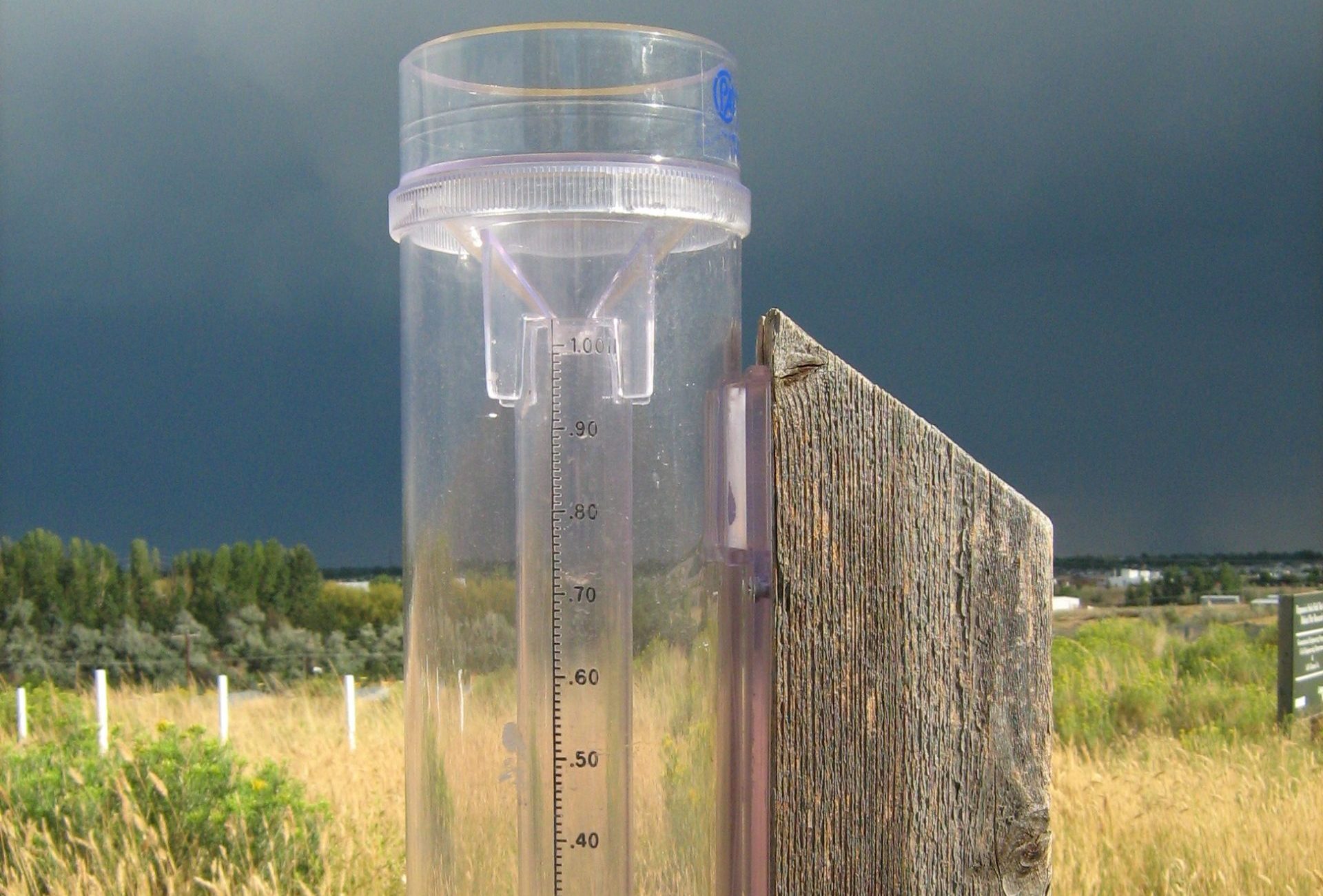Learn how to use a rain gauge more effectively

Measuring rain, hail and snow is easy to do, with a little training and attention to detail
Most of us know how to use a rain gauge, or at least most of us think that we know how. Set it outdoors before a rainfall, check it after the storm has passed, and then tell your friends and neighbors how much fell.
While those may be the basics – if you want to get an “accurate” measurement of precipitation, you probably need to do a little more work.
Madelynn Wuestenberg, agricultural climatology specialist with Iowa State University Extension and Outreach, will explain the best practices for selecting and using a rain gauge at this year’s Farm Progress Show, Aug. 27-29 near Boone.
As it turns out, there can be a lot of variability from one gauge to another. Factors such as diameter, length and placement can all have a significant impact on the accuracy of the measurement.
Her display will include different kinds of rain gauges, and she will test participants’ knowledge of how to read different gauges. She will also explain how an automated rain gauge works – a more sophisticated device, which is used to automatically send data to a data logger. This type of rain gauge helps measure total rainfall, as well as rainfall frequency and intensity.
“I will be highlighting how people can become weather reporters and how to correctly read a rain gauge,” said Wuestenberg. “We need citizen scientists to help improve weather predictions and we need to empower individuals that they have the capacity and knowledge to record weather data.”
Community Collaborative Rain, Hail and Snow Network
She will give special attention to how rain gauges are used for the CoCoRaHS program, which stands for Community Collaborative Rain, Hail and Snow Network.
The program began in 1987 and encourages the use of low-cost measurement tools, used by trained individuals with the goal of providing high quality data for natural resources, education and research initiatives.
The data from CoCoRaHS participants is publicly available and is shown on the program’s online mapping system.
“These are ‘citizen scientists’ who are providing important data that is used to inform and validate weather data, education and drought monitoring,” said Wuestenberg. “The program empowers individuals to have the capacity and the knowledge to gather this data, and make accurate assessments about their own precipitation.”
Today, more than 26,000 active precipitation observers record their data in the United States, Canada, Puerto Rico, the U.S. Virgin Islands, Guam and the Bahamas.
Iowa has about 170 active participants on record, and Wuestenberg is hoping to expand that number.
One of Iowa’s contributors is Mark Licht, associate professor and cropping systems specialist with Iowa State University Extension and Outreach.
He will be on hand at the show to discuss how to take good measurements, and what the information means for crop farmers.
“I will be able to explain not only how to collect rainfall totals, but also speak about the importance of rainfall for crop production,” he said.
Pin your location
The climate exhibit space will also include a push-pin map of the Midwest for people to pinpoint where they live. By doing so, Wuestenberg hopes to bring attention to areas where CoCoRaHS participants are active – and where more are still needed.
“If you live somewhere where this is a significant gap in reporting, we could really use you as a reporter through CoCoRaHS,” she said.
The Iowa State University exhibit space can be found at the corner of 7th Street and Central Avenue.
Wuestenberg can be reached at 515-294-6014 or [email protected].
PHOTO: An outdoor rain gauge. (Henry Reges/CoCoRaHS HQ)



